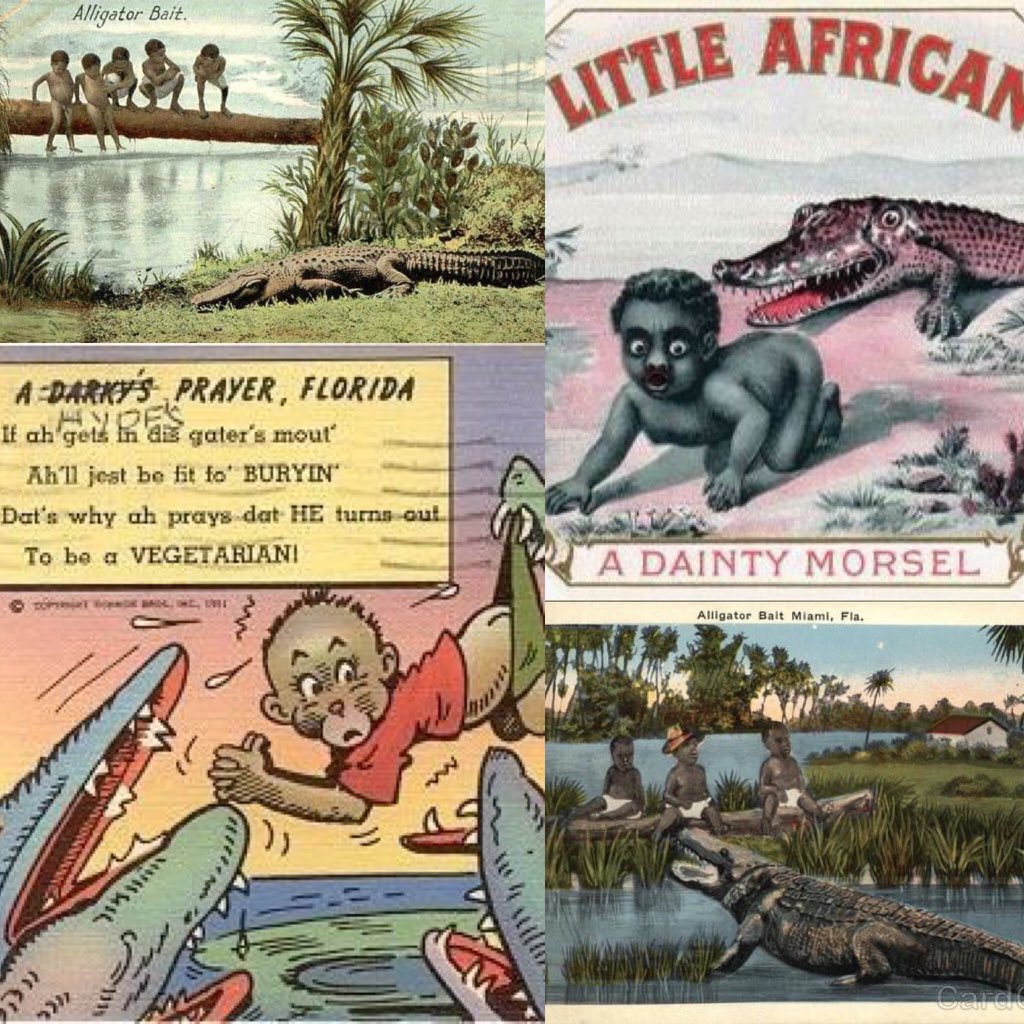Among the myriad of atrocities committed against enslaved Africans in the Americas and Europe, the practice of “Alligator Baiting,” involving the utilization of infants as bait for alligators, stands out as particularly poignant. This reprehensible act evokes deep emotional distress in the reader, and envisioning this scenario with a child of your own intensifies the chilling impact, sending shudders down one’s spine.
Articulating these sentiments is a challenging task, yet it is crucial to shed light on them for the sake of posterity and the well-being of current and future generations. The malevolent practice, widely recognized as “Alligator Baiting” or “Gator Baiting,” entailed the cruel use of children from enslaved African communities as lures to attract alligators.

This deplorable tradition gained notoriety in Louisiana, Florida, and various Southern regions of America, driven by the substantial demand for alligator skin. This sought-after material was extensively used in crafting leather shoes, jackets, and various other goods during that period.
The lucrative business of alligator hunting during the 1800s and 1900s presented significant risks to white hunters. Many faced perilous situations, losing limbs, and even their lives while attempting to entice alligators to the surface. Faced with such dangers, they resorted to the disturbing practice of using infants as ‘bait.’
As an alternative, perpetrators turned to the theft of infants born into slavery, employing them as bait. Rather than choosing more readily available animals like rodents, chickens, rabbits, or young goats (deemed too valuable), the unfortunate fate of infants, carried by women through nine months of intense pain and brutality, unfolded.

Tragically, young black children became victims of this despicable practice, purportedly carried out by white men during the era of slavery in Florida, Louisiana, and various other regions of the American South.
This detailed account comes from the grandson of an individual involved in this horrifying practice. Enslaved individuals with infants would discreetly have their babies seized, especially when their mothers were not vigilant. These children were then taken to the swamp, sometimes left in enclosures resembling small chicken coops. Under the cover of night, perpetrators would return, securing the babies with tight knots, including a rope around their neck and torso.
Upon casting the infants tied to the rope, alligators would swiftly approach and attack, with the narrator describing how the alligator would firmly grip the child with its jaws, obscuring the view except for the visible rope. This gruesome act was later depicted in various forms, such as sheet music, postcards, and figurines.

In later years, a candy manufacturer producing black licorice drops created an offensive advertisement featuring a hungry-looking alligator leering at a black baby.
While many have rejected this narrative in an attempt to conceal these horrendous acts, oral testimonies, documentaries, and published materials exist to validate our pursuit of closure, empathy, and healing. Further substantiating this repugnant practice, the Jim Crow museum displays photos and postcards that unequivocally illuminate this dark chapter.
In Florida, a man went so far as to frame a picture featuring nine unclothed African boys, captioned with the words “Alligator Bait” below, and hung it on his wall.


